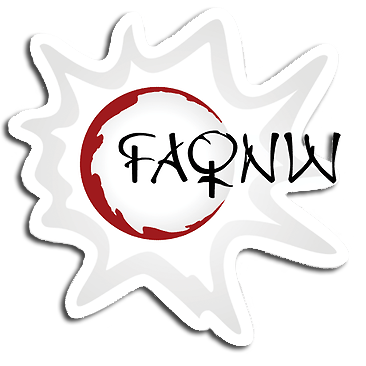In many Indigenous creation stories, humans are the last species to arrive on the land. Thus, humans arrived in a society that was already well organized and functioning with its own value systems, particular norms and ethics. The inclusion of humans in this society therefore involved the creation of certain agreements, arrangements and rules with the Animals. These agreements, arrangements and rules represent a set of rights and responsibilities that everyone must respect in order to live harmoniously in this society.
Several systems of rights and responsibilities apply in the context of governance. In Canada today, many legal traditions intersect and overlap, including the wide range of Indigenous legal traditions, state law (Quebec and Canadian) and international law. In order to clarify your rights and responsibilities, this module will address women's rights and responsibilities within Indigenous cultures and legal traditions, in federal (Canadian) and provincial (Quebec) law and in international law.
Indigenous cultures and legal traditions
It is important to note that prior to colonization, Indigenous Nations were self-governing on their ancestral lands and it was the traditions of those Indigenous Nations that applied to those lands and to the people who lived on or through them. Even today, there are as many Indigenous legal traditions as there are Indigenous peoples. Some examples that relate to governance in particular include: deliberation, sacred laws and laws of nature, and customs.
Deliberation
"This creature fell from the sky, but she can' t live in the water (...) We can' t let her perish in the ocean. It is our duty to find a place for her to live. So the animals began to deliberate. Everyone was genuinely concerned about the fate of the young woman, but no one seemed to be able to come up with a solution. None of the proposed plans had a consensus. Then, when no way out seemed possible, someone suggested that we try to find the fallen tree along with the creature.”
Deliberation is when members of a community collectively discuss problems and come up with solutions that can be agreed upon. As the story demonstrates, consensus does not mean that everyone has to agree on everything, but rather that people tolerate and respect opposing views and come to a solution by consensus. For example, one woman leader explained the importance of allowing everyone to participate in important decisions in their community:
"[Governance must not] reproduce the same colonial system in which it is leaders who decide, elected officials who decide everything and we, the citizens, have no place, we have no power, we have no autonomy. That's why I advocate... I defend our place. I think that we have our place and that we can develop and improve things in our communities."
The sacred laws and the laws of nature
"Yäa'taenhtsihk raised her grandchildren alone on the island (...). When they became adults, the Twins began the great task that had been entrusted to them, that of ordering our world for the coming of man (...). Thus, each of the Twins took turns in their work, Iouske'a creating the elements from scratch and Tawihskaron' modifying and subverting all that his brother created. Thus began the great cycle of creation."
Sacred laws and laws of nature are derived from the relationships between an individual, their ancestors and their natural environment. When communities or individuals are faced with a problem, they can refer to the laws of nature or the laws of creation, such as those told in the story, to find solutions. This is what a female Elder explained to us:
"[Governance] always starts with us, always starts like the tree over there and when you know who you are, when you know your truth, you will be so strong that nothing can stop you or tear you down. And I saw this image... You've probably seen on a rock or even outside in the cement, you've probably seen a little plant growing out of the rock. You see, this plant is telling us that it has its own, that it knows its own governance. And it's so strong that it manages to grow here. Creation is here to teach us or for us to learn from each other. And a little plant knows, the plant knows. It has asked to grow, and it knows itself... Its rule is to grow."
Customs
"And the men came out of the cave. Iouske'a taught them how to behave on Earth. He told them everything they had to do and not do to live happily and peacefully. Also, he asked them to prepare a great feast from which everything was to be eaten. Amazed by the beauty of the Creation, the men divided themselves into clans and travelled in all directions to establish villages and nations.”
Customs are the ways of acting and behaving within one's community. These rules are often not written down, but rather they come from the patterns and examples that are passed on to community members to do what is considered right. As Iouske'a does, humans create rules for living together that they in turn pass on to the villages and nations they establish and thus a variety of customs are born. It is everyone's responsibility to respect the customs that ensure harmony. As one female Elder explained, these are responsibilities we have to each other, rather than individual rights:
"You know, the other thing about rights...we don't have rights, they're responsibilities. [For example], you can say: you have the right to whatever you want. And I would say: I have the right as a woman to do anything... But no, my responsibility is to make sure you have everything you need to survive and be happy and you have the same responsibility to me. So, the thing is the responsibilities. Because when we have an entitlement, you're out there by yourself, I'm out there by myself and we're expecting something. But when you have responsibilities, you're going to ask me: what do you need? And I'm going to say: what do you need?... We don't have rights, we have responsibilities to each other.”
Federal (Canadian) and provincial (Quebec) law
"Meanwhile, Little Turtle lived alone in the Sky. But with all the mischief of Tawihskaron', many animals began to envy her. One day, Deer had the idea to join her. (...) The Animals looked up and, indeed, saw a tiny shadow running around. They were furious with Deer. By deserting them, he had condemned the Council to join him.”
It is generally said that Canadian and Quebec law is an imposed order, that is to say that the rules have been imposed by the State on individuals, whether they are Indigenous or non-Indigenous. For Indigenous communities, it is a total colonial system that has been imposed, not only its rules, but also its political structures. However, there are several legal rules that recognize the right to self-government of Indigenous peoples.
For example, the Canadian government has recognized that the right to self-government is part of the Aboriginal and treaty rights protected by section 35 of the . This article also guarantees this .
In Quebec, on March 20, 1985, the National Assembly of Quebec endorsed in a resolution the principles that should guide Quebec's relations with Indigenous peoples, including the recognition of Indigenous nations as "distinct nations that have the right to their own culture, language, customs and traditions, as well as the right to direct the development of ".
also authorizes First Nation band councils to pass bylaws in certain areas, including health, on-reserve residency, sports, water, roads and buildings, and animal protection.
Treaties between the Government of Canada, Indigenous groups and often the provinces and territories are also legal tools to secure the rights of Indigenous peoples. They provide a framework for living together and sharing the lands that Indigenous peoples traditionally occupied. Treaties define the ongoing rights and obligations of all parties.
Treaties with Indigenous peoples therefore include historic treaties with First Nations and modern treaties (also known as comprehensive land claim agreements) with Indigenous groups.
International law
The United Nations Declaration on the Rights of Indigenous Peoples also contains rules that have been discussed among several actors, such as deliberation in Indigenous legal cultures. International law thus allows for the establishment or redefinition of relationships between equal partners, for example between Indigenous nations and the Canadian nation. Several articles in the Declaration deal directly with governance:
For example, Indigenous researcher Rauna Kuakkonen explained what self-determination means to her:
" can be seen as a core value governed by the standard of integrity: physical integrity, cultural integrity and territorial integrity."
For example, one woman leader mentioned the importance of having all the financial means to be autonomous:
"Well, self-government is that the government wants to get out of its obligations. Well, they're not going to give us a cheque. You know, all the money for education, health, police, those big issues, to run your band council, it comes from the government. And if you want to get out of it, it will do its business. But you, how are you going to live? How are you going to pay for your school? How are you going to pay for health care?”
For example, one female Elder talked about how it was difficult, but necessary, for communities to develop their own government model.
"There is a bureaucracy and I know for a fact that you can't change a bureaucracy, you just have to drop it and start over. And maybe that's what women can do, start over."
For example, Rauna Kuakkonen suggests ensuring the consent of all community members when making decisions:
"It's about consent, which includes both .”
YOUR TURN
Now that you know more about the legal frameworks for governance, think of an issue that is important to you. For example, it could be the environment or land, family, youth, seniors, medicine or health, education, language, etc. Once you have selected your topic, reflect on what you learned in Module 2:
Go back and read the articles of the United Nations Declaration on Indigenous Peoples listed above. As you read them, think about the following questions:

